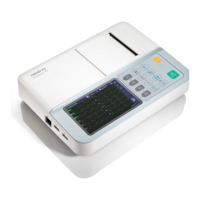How to fix Shenzhen mindray BeneHeart R3 that won't power on?
- CCasey SanchezAug 18, 2025
If your Shenzhen mindray Medical Equipment does not power up, ensure the power cord is securely connected to AC mains. Also, verify that the battery is installed and has sufficient charge. If the battery is low, connect the equipment to AC mains to charge it while running.

